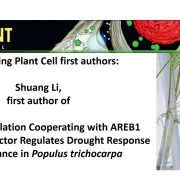
Recognizing Plant Cell first authors: Shuang Li
The Plant Cell, The Plant Cell: Author ProfilesShuang Li, first author of Histone Acetylation Cooperating with AREB1 Transcription Factor Regulates Drought Response and Tolerance in Populus trichocarpa
Current Position: Ph.D, State Key Laboratory of Tree Genetics and Breeding, Northeast Forestry University, Harbin, China
Education: BS, School…
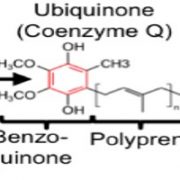
Questions about Coenzyme Q? A New Genetic/Metabolic Study Has Answers
The Plant Cell, The Plant Cell: In BriefAnyone who works on plants should be dazzled by the complexity and versatility of plant metabolism. In fact, why restrict this to plant biologists? We all love plant metabolites, whether we’re enjoying the caffeine in our morning cup of tea, or the capsaicin heat in the pepper flakes on our lunchtime…
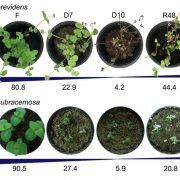
How resurrection plants survive being hung out to dry
The Plant Cell, The Plant Cell: In BriefResurrection plants have the unique ability to survive extreme dehydration (desiccation), lying dormant for months or sometimes years until rehydration is possible. This formidable survival strategy has independently evolved several times across the land plant phylogeny, and several phylogenetically…
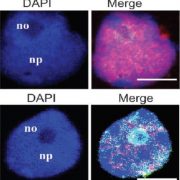
Worming into the Plant Chromatin: A Nematode Effector Influences Host Histone Acetylation
Blog, The Plant CellPlants encounter myriad invaders, including bacteria, fungi, insects, and other parasites. These pathogens generally deliver effector proteins into plants, increasing their virulence and targeting various host processes (Toruño et al., 2016). Although advances in the past two decades have led to significant…
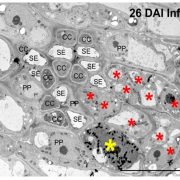
Sugar architect: the Brassicaceae pathogen Clubroot manipulates plants on multiple levels to secure sucrose supply
The Plant Cell, The Plant Cell: In BriefThe soil-borne pathogen Plasmodiophora brassicae can infect most members of the Brassicaceae family. The infections, which can lead to extensive crop losses, typically involve development of galls in the underground tissues of the plant, giving the pathogen its common name, ‘clubroot’.
Although…
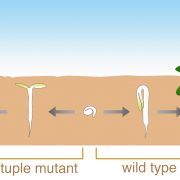
Regulation of Apical Hook Development: A Dual-Core Processes Complex Information
Research, The Plant Cell, The Plant Cell: In a NutshellZhang et al. investigate the regulation of apical hook development in Arabidopsis thaliana. The Plant Cell (2018). https://doi.org/10.1105/tpc.18.00018.
By Xing Zhang, Yichuan Wang and Hongwei Guo.
Background: For sessile plants, survival in dynamic nature is never easy! The very first challenge…

Small Talk: Protons Help Calcium Get the Message Across
The Plant Cell, The Plant Cell: In BriefCalcium (Ca2+) is a versatile second messenger that controls a range of cellular processes—from pollen tube growth to stress responses—by regulating the activity of various proteins. Although Ca2+ is present at millimolar concentrations in the cell wall and vacuole, a set of channels, pumps, and…

Corn ChIPs and RNA-seq: Researchers Dip into Advanced Tools and Resources to Examine bZIP Transcription Factor Function in the Maize Endosperm
The Plant Cell, The Plant Cell: In BriefThe endosperm of maize (Zea mays) seeds undergoes a complicated developmental program that ends with the production of massive amounts of storage compounds, particularly carbohydrates, but also including zein storage proteins (reviewed in Li and Berger, 2012; Hannah and Boehlein, 2017; Larkins et al.,…
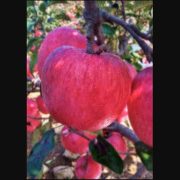
Towards Pathogen-Resistant Apples
Research, The Plant Cell, The Plant Cell: In a NutshellZhang et al. show that a single-nucleotide polymorphism in a hairpin RNA promoter contributes to Alternaria alternata leaf spot resistance in apple and could serve as a marker to distinguish susceptible versus resistant apple cultivars. https://doi.org/10.1105/tpc.18.00042.
Background: Apple Alternaria…

